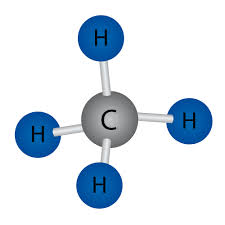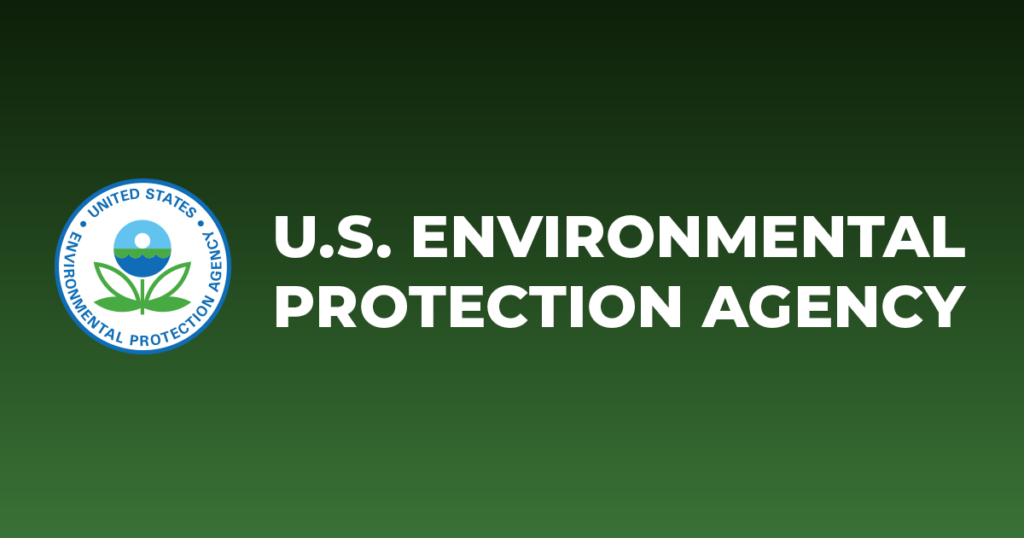
Energy / Automotive News |OPEC basket of thirteen crudes stood at $89.89/bbl
London, 12 October, 2023, (Oilandgaspress): – The U.S. Energy Information Administration (EIA) expects U.S. households that heat with natural gas or are in the West will spend less on heating costs this winter than last winter. In its 2023 Winter Fuels Outlook, EIA forecasts residential natural gas prices this winter will be about 21% lower than last winter. Natural gas is the most common source of heat for U.S. households. “Natural gas prices this year have been consistently lower than in 2022. Even if this winter is colder than forecast, we still expect households heated by natural gas to pay less for heat this winter,” said EIA Administrator Joe DeCarolis. Costs for households heating with propane and electricity are likely to remain relatively flat. For homes that use heating oil, EIA expects that heating expenses will be somewhat higher this winter. Warmer-than- or colder-than-expected temperatures could affect heating oil costs. The United States typically consumes more heating fuels than it produces during the winter, so inventories become an important factor in commodity prices. Heading into this winter heating season, inventories for most heating fuels in most of the country are above the five-year average, following a relatively mild end to the 2022–2023 winter. EIA expects U.S. natural gas inventories will end October 6% above the five-year average, and propane stocks are currently 17% above the five-year average. The Winter Fuels Outlook is a supplement to EIA’s October Short-Term Energy Outlook (STEO), and EIA will update it every month through February to reflect changes in commodity prices and temperatures. Read full article

A sharp escalation in geopolitical risk in the Middle East, a region accounting for more than one-third of the world’s seaborne oil trade, has markets on edge. The surprise attack by Hamas on Israel on 7 October spurred traders to price in a $3-4/bbl risk premium when markets opened. Prices have since stabilised, with benchmark Brent futures trading at around $87/bbl at the time of writing. While there has been no direct impact on physical supply, markets will remain on tenterhooks as the crisis unfolds. Oil prices had already surged to almost $98/bbl in mid-September after Saudi Arabia and Russia extended their voluntary production cuts through year-end and as crude oil and distillate inventories drew to exceptionally low levels. Rising prices focused the market’s attention on the prospect that ‘higher for longer’ interest rates could slow economic and demand growth. By early October, Brent futures tumbled by more than $12/bbl to $84/bbl as supply fears gave way to deteriorating macroeconomic indicators and signs of demand destruction in the United States, where gasoline deliveries plunged to two-decade lows. Demand destruction has hit emerging markets even harder, as currency effects and the removal of subsidies have amplified the rise in fuel prices. However, growth continues apace in China, India and Brazil, underpinning forecast global oil demand gains for this year at around 2.3 mb/d, of which China accounts for 77%. Global oil demand growth is set to slow to 900 kb/d in 2024 as the post-Covid rebound runs out of steam while the economic expansion slows and energy efficiency improvements weigh on oil use. Read full article

The Imperative of Cutting Methane from Fossil Fuels, released today, builds on findings from the IEA’s recently updated net zero pathway to limit global warming to 1.5 °C. It shows that while a drop in fossil fuel demand would cut methane emissions, these reductions by themselves would not occur fast enough to meet the world’s climate goals. Additional targeted actions to tackle methane emissions from fossil fuel production and use – such as by eliminating routine venting and flaring and repairing leaks – are essential to limit warming to 1.5 °C and reduce the risk of crossing irreversible climate tipping points.
The new report finds that rapid cuts in methane emissions from fossil fuels could avoid up to 0.1 °C in global temperature rise by mid-century – greater than the emissions impact of immediately taking all cars and trucks in the world off the road. As methane emissions lead to ground-level ozone pollution, immediate action would also deliver public health, food security and economic benefits. Read full article

Global gas demand is on course to grow by an average on 1.6% a year between 2022 and 2026, down from an average of 2.5% a year between 2017 and 2021, says the Gas 2023 Medium-Term Market Report. The report notes that the advent of the global energy crisis in 2022, triggered by Russia’s invasion of Ukraine, has ushered in a different era for global gas markets after their decade of strong growth between 2011 and 2021. Overall gas demand from mature markets in Asia Pacific*, Europe and North America peaked in 2021, and is forecast to decline by 1% annually through to 2026, according to the report. An accelerated rollout of renewables and improved energy efficiency are among the key drivers behind the downward trend for natural gas in these markets. For Europe, the loss of piped gas from Russia, following its invasion of Ukraine, pressed governments to seek alternative solutions to maintain energy security.
Decreasing demand in mature markets across the world – a collection of countries that represents almost half of global gas consumption – means that growth will be highly concentrated in fast-growing Asian markets as well as some gas-rich economies in the Middle East and Africa. China alone is expected to account for almost half of the total growth in global gas demand between 2022 and 2026, drawing on the fuel to serve its industrial production, power sector and urban areas. An increase in the amount of new liquefied natural gas (LNG) capacity coming online is expected to affect market dynamics in 2025 and 2026 by easing some of the tightness and unlocking price sensitive demand. Global LNG capacity is expected to expand by 25% between 2022 and 2026, with the United States consolidating its position as the world’s largest LNG exporter through the construction of new liquefaction plants. Growth in LNG supply signals a shift to a more globalised gas marketplace, which will improve resiliency and the ability of suppliers and consumers to respond to supply and demand shocks. Read full article
Aramco is further advancing the development of emissions reduction solutions including lower-carbon hydrogen, Direct Air Capture (DAC) of carbon dioxide, a novel approach to CO2 storage that involves turning carbon dioxide into stone, and the harnessing of geothermal energy.
The projects support Aramco’s ambition to achieve net-zero Scope 1 and Scope 2 greenhouse gas emissions across its wholly-owned and operated assets by 2050, as well as the Kingdom of Saudi Arabia’s 2060 net-zero ambition. Details of the projects were disclosed on the sidelines of MENA Climate Week 2023, which is taking place in Saudi Arabia from October 8 to 12. Read full article

Aramco has signed definitive agreements to acquire a strategic minority stake in MidOcean Energy for $500 million. MidOcean Energy is a liquefied natural gas (LNG) company formed and managed by EIG, a leading institutional investor in the global energy and infrastructure sectors. MidOcean Energy is currently in the process of acquiring interests in four Australian LNG projects, with a growth strategy to create a diversified global LNG business. The strategic partnership with MidOcean Energy marks Aramco’s first international investment in LNG.
The agreement builds on the relationship between Aramco and EIG, which was part of a consortium that acquired a 49% stake in Aramco Oil Pipelines Company, a subsidiary of Aramco, in 2021. Completion of the transaction is subject to closing conditions which include regulatory approvals. Aramco also has the option to increase its shareholding and associated rights in MidOcean Energy in the future. Read full article
U.S. Environmental Protection Agency (EPA) announced funding for the largest cleanup project to ever be implemented under the Great Lakes Restoration Initiative and the Great Lakes Legacy Act, thanks to historic resources from President Biden’s Investing in America Agenda. Under a new project agreement between EPA and five non-federal sponsors, an estimated investment of $450 million will go toward the cleanup of nearly two million cubic yards of contaminated sediments from the Milwaukee Estuary Area of Concern. This long-awaited cleanup will greatly advance the environmental, community, and economic revitalization of Milwaukee-area communities and will help lead to the ultimate removal of the Milwaukee Estuary from the list of 25 remaining U.S. Areas of Concern (AOCs) — highly environmentally degraded areas found across the Great Lakes basin. EPA Administrator Michael S. Regan announced this effort alongside U.S. Senator Tammy Baldwin (WI) in Milwaukee, Wisconsin at Discovery World, a science and technology museum on the shore of Lake Michigan. Administrator Regan and Senator Baldwin joined project partners, state and local officials, community leaders and students from the University of Wisconsin Milwaukee’s School of Freshwater Sciences for the event. Read full article

U.S. Environmental Protection Agency (EPA) proposed to approve a rule by the South Coast Air Quality Management District (AQMD) that is serving to protect communities from air pollution generated by warehouse operations, including freight vehicle trips to and from warehouses. The South Coast AQMD area covers large areas of Los Angeles, Orange, Riverside and San Bernardino counties, including the Coachella Valley, and is home to more than 17 million people, approximately 44% of the population of the entire state of California.
By proposing approval of the South Coast rule, we are seeking to better protect overburdened communities from the harmful effects of air pollution,” said EPA Pacific Southwest Regional Administrator Martha Guzman. “I have travelled to the Inland Empire and throughout the South Coast and seen firsthand how Black and Brown communities are bearing the brunt of goods moving through our country, with damaging impacts such as asthma, missed days of school or work, and increased medical bills. This rule is an essential step toward protecting Californians that continue to shoulder a large burden of air pollution for all of us.”
In 2021, the South Coast AQMD adopted a rule that requires large warehouses to offset pollution from the truck traffic they attract. The South Coast rule, known as the Warehouse Indirect Source Rule, serves to reduce harmful air pollutants, including nitrogen oxides and particulate matter, from warehouse operations. The rule also addresses related mobile sources of pollution, such as trucks that deliver goods to and from the facilities, yard trucks, and transport refrigeration units. Additional emissions sources can include onsite stationary equipment such as diesel backup generators or manufacturing equipment.
The South Coast rule creates a point system known as Warehouse Actions and Investments to Reduce Emissions (WAIRE). The rule allows warehouses to earn WAIRE points by completing actions such as investing in zero emission (ZE) and/or near-zero emission technologies, using solar power, installing onsite ZE charging or fueling infrastructure, or installing filtration systems in qualified buildings such as schools. Other options to earn WAIRE points include developing a custom WAIRE plan or paying mitigation fees. By 2025, all warehouses over 100,000 square feet will be subject to the rule. Pollution from mobile sources – ships, trucks, and trains – contribute to poor air quality in the greater Los Angeles region. If finalized as proposed, the Warehouse Indirect Source Rule, which is part of a larger multi-prong strategy to reduce emissions from mobile sources and improve public health, will become federally enforceable. Read full article

Ford Statement on Kentucky Truck Plant Work Stoppage
The decision by the UAW to call a strike at Ford’s Kentucky Truck Plant is grossly irresponsible but unsurprising given the union leadership’s stated strategy of keeping the Detroit 3 wounded for months through “reputational damage” and “industrial chaos.” Ford made an outstanding offer that would make a meaningful positive difference in the quality of life for our 57,000 UAW-represented workers, who are already among the best compensated hourly manufacturing workers anywhere in the world. In addition to our offer on pay and benefits, Ford has been bargaining in good faith this week on joint venture battery plants, which are slated to begin production in the coming year. The UAW leadership’s decision to reject this record contract offer – which the UAW has publicly described as the best offer on the table – and strike Kentucky Truck Plant, carries serious consequences for our workforce, suppliers, dealers and commercial customers. Kentucky Truck is Ford’s largest plant and one of the largest auto factories in America and the world. The vehicles produced at the Louisville-based factory – the F-Series Super Duty, the Ford Expedition and the Lincoln Navigator – generate $25 billion a year in revenue. In addition to affecting approximately 9,000 direct employees at the plant, this work stoppage will generate painful aftershocks – including putting at risk approximately a dozen additional Ford operations and many more supplier operations that together employ well over 100,000 people. This decision by the UAW is all the more wrongheaded given that Ford is the only automaker to add UAW jobs since the Great Recession and assemble all of its full-size trucks in America. Read full article

Ford posted gains across its portfolio of gas, electric and hybrid vehicle lines in the third quarter with F-Series expanding its lead as America’s No. 1 selling truck, followed by record electric and hybrid vehicle sales and strong commercial Transit van sales.
Year-to-date, Ford has been America’s best-selling brand.
“We saw strong balanced sales growth providing choice to our customers in the third quarter, with growth
coming from our gas engine, electric, hybrid and commercial van lineup,” said Andrew Frick, vice president,sales, distribution and trucks. “Ford’s truck lineup remains the industry’s top seller. The Maverick and Bronco Sport remain red hot after Ford boosted manufacturing capacity earlier this year. The all-new seventh generation Mustang is off to a jack-rabbit start in its first full month, up 90 percent in September over last year.”
Ford F-Series sales rose 13.4 percent over last year on sales of 190,477 trucks. Year-to-date, F-Series sales totaled 573,370 trucks, outselling the second place Silverado by 169,949 trucks. Ford overall Q3 truck sales, including pickups and vans, are up 15.3 percent over last year on sales of 275,554 vehicles. Big gains came from the all-new Super Duty pickups (up 17.6 percent), Maverick (up 83.4percent) and Transit (up 28.3 percent). Ford was the No. 1 selling truck manufacturer again in Q3 and year-to-date. With 825,179 pickups and vans sold through September of this year, Ford has outsold GM’s pickups and vans by approximately 64,000 vehicles.
Ford Electric and Hybrids Best-Ever Sales
Ford’s Q3 EV sales were up 14.8 percent on best ever sales of 20,962 vehicles. Much of this gain came on strong Mustang Mach-E sales, up 42.5 percent for the quarter and best since its debut in 2021. In the month of September, Mach-E sales achieved sales of 5,872, a new record and a year-over-year gain of 153 percent for the month. E-Transit was the No. 1 selling electric van with its best ever quarterly sales results of 2,617, an 89.8 percent increase. F-150 Lightning is expected to produce sales increases in Q4, as capacity actions at the Rouge Electric Vehicle Center are realized. In September, Ford’s overall electric vehicle sales were up 65.0 percent. Read More
| Oil and Gas Blends | Units | Oil Price US$/bbl | Change |
| Crude Oil (WTI) | USD/bbl | $82.64 | Down |
| Crude Oil (Brent) | USD/bbl | $85.70 | Down |
| Bonny Light | USD/bbl | $88.44 | Down |
| Saharan Blend | USD/bbl | $88.42 | Down |
| Natural Gas | USD/MMBtu | $3.34 | Down |
| OPEC basket 11/10/23 | USD/bbl | $89.89 | Down |
| At press time 12 October 2023 |

Oil and Gas News Undiluted !!! �The squeaky wheel gets the oil�
OilandGasPress Energy Newsbites and Analysis Roundup | Compiled by: OGP Staff, Segun Cole @oilandgaspress.
Disclaimer: News articles reported on OilAndGasPress are a reflection of what is published in the media. OilAndGasPress is not in a position to verify the accuracy of daily news articles. The materials provided are for informational and educational purposes only and are not intended to provide tax, legal, or investment advice.
Information posted is accurate at the time of posting, but may be superseded by subsequent press releases
Please email us your industry related news for publication info@OilAndGasPress.com
Follow us: @OilAndGasPress on Twitter |
Oil and gas press covers, Energy Monitor, Climate, Renewable, Wind, Biomass, Sustainability, Oil Price, LPG, Solar, Marine, Aviation, Fuel, Hydrogen, Electric ,EV, Gas,

